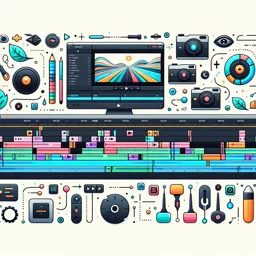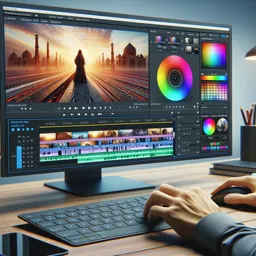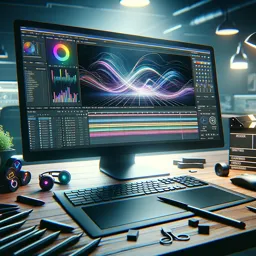Introduction to Sound Design
When it comes to creating compelling video content, visuals often take center stage. However, the auditory experience is just as crucial. Sound design refers to the process of specifying, acquiring, manipulating, or generating audio elements. In video editing, solid sound design can transform ordinary footage into an immersive story, heightening tension, evoking emotion, and bringing scenes to life.
Key Elements of Sound Design in Video
- Foley Effects: Custom-recorded sounds that replicate everyday effects, like footsteps or rustling clothes, to enhance realism.
- Ambience: Natural background sounds (e.g., rainfall, city noise) that establish location and mood.
- Sound Effects (SFX): Artificially created or edited sounds for actions or transitions.
- Music: Background scores and songs selected to match the emotional tone of the video.
- Dialogue: Spoken components that must be clear and well-mixed to stand out against other sounds.
Why Is Sound Design Important?
Well-crafted sound design does more than just fill silence. It guides the audience’s emotions, directs attention, and conveys story elements not always present on screen. For example, a suspenseful soundtrack can build anticipation even before anything happens visually. Good sound design can also mask poor-quality footage or guide viewers through narrative transitions smoothly.
Techniques and Tools for Sound Design
Sound designers use various tools and techniques to achieve their creative goals. Common practices include:
- Layering: Combining multiple audio tracks for depth and complexity.
- Equalization (EQ): Adjusting frequencies to enhance or diminish specific sound qualities.
- Reverb and Effects: Adding effects to simulate environments or achieve artistic results.
- Automation: Controlling volume, panning, or effects over time for dynamic soundscapes.
While professional Digital Audio Workstations (DAWs) offer advanced features, even basic video editing software allows for creative sound manipulation.
Tips for Beginners
- Invest in Good Headphones: Accurate monitoring helps you hear subtle differences.
- Organize Your Audio Files: Keep sound libraries sorted to speed up the editing process.
- Experiment: Don’t be afraid to mix unconventional sounds for unique results.
- Trust Your Ears: If something sounds off, adjust it—even if it looks right visually.
Conclusion
Sound design is an integral part of video editing that often goes unnoticed when done well. By paying careful attention to audio elements, editors can elevate their projects, creating a richer and more engaging experience for viewers. Whether it’s for film, advertisements, or online content, mastering sound design is a valuable skill for any video creator.
































